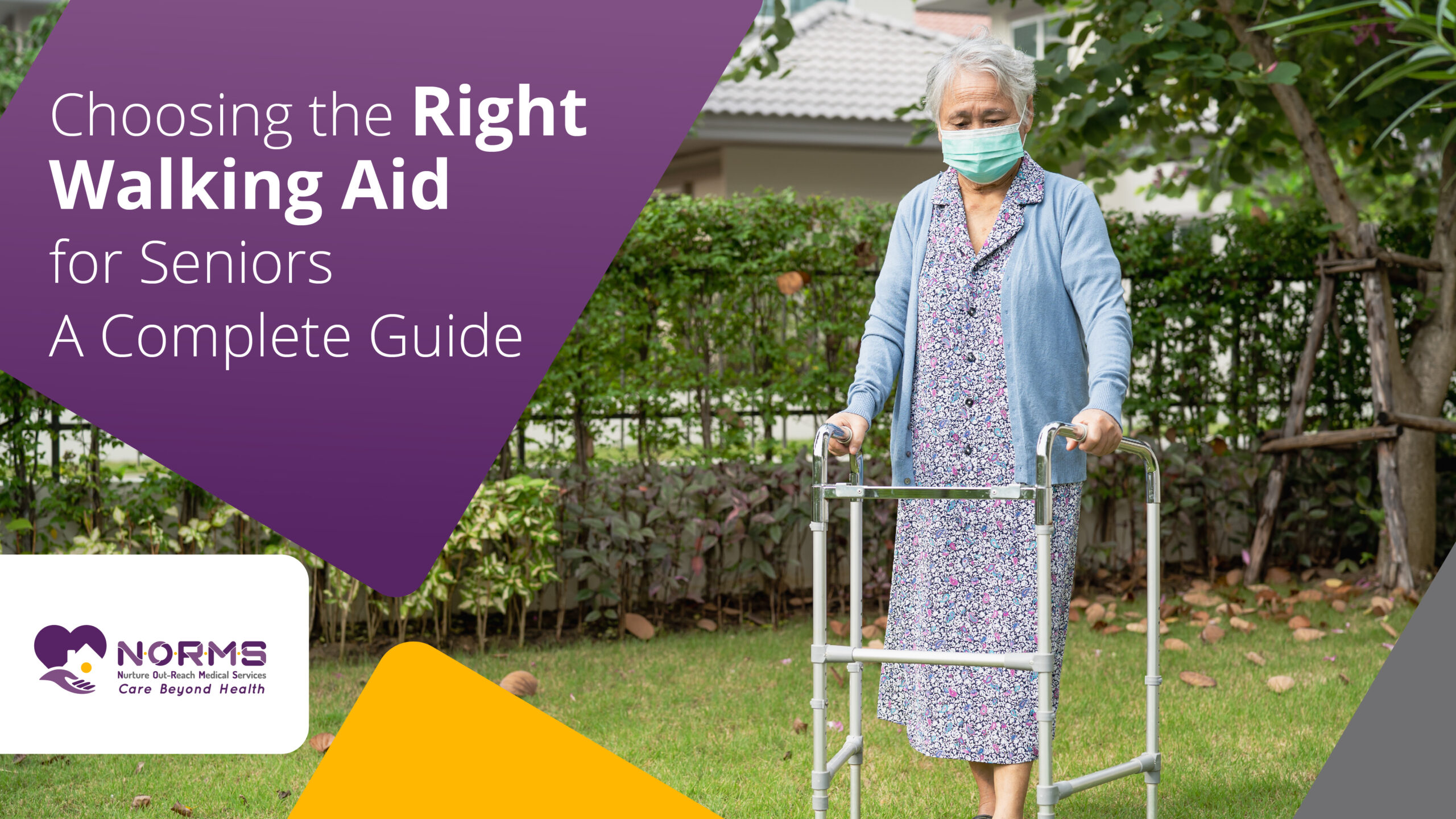
As a person grows older, being able to move is becoming more and more essential to a person’s overall health. For seniors who struggle with balancing or mobility, walking aids can play a critical role on the way to improve their independence and safety. To that end, a comprehensive guide on walking aids for elders is designed to provide a detailed outline, which caters to all their needs.
TABLE OF CONTENTS
A walking aid is a supportive tool that is meant to provide support for individuals with mobility issues that make them balanced and stable while walking. These aids are designed in different ways, for example, a cane, a walker, or crutches, depending on the required level of support and the user’s specific needs. Walking aids are especially important tools for seniors or people who are limited in their physical capability, they provide them with the needed help to walk around the environment safely, promote their independence, and increase overall mobility and self-esteem.
As we get older, we may experience decreased muscle mass, bone density, and joint flexibility, thus resulting in the need for walking aids. Such problems as arthritis or neurological disorders can lead to a decline in mobility. Physiologically, aging creates changes in gait and balance with the scientific proving. According to research guidelines, walking aids, which offer support and reduce the risk of future falls, as well as encourage active lifestyles, improve the whole health of the elderly.
You might begin by listing the specific mobility problems that the senior is faced with such as gait difficulties, weakness, or joint pain. This evaluation will allow us to pick personal walking aids, considering individual demands.
Before making any decision, always consult with healthcare professionals like doctors, physiotherapists, and occupational therapists. This information will guide us in selecting the most appropriate walking instrument for the elderly based on their health status and mobility concerns.
As people age, mobility plays a vital role in maintaining a person’s health. For elderly people having balance or mobility difficulties, walking aids can be very useful tools to raise the independence level and safety. This guide covers the topic of picking up the right walking aid for seniors with a special focus on some aspects like mobility level, lifestyle, and personal convenience.
Canes are convenient for persons who require a minimum amount of assistance. It comes in various styles, such as single-point, quad, and folding canes, and these provide varying amounts of stability according to the user’s requirements.
Walkers provide more stability and support, which makes them just right for the elderly with major balance problems. Varies choices are available like standard, wheeled, and rollators which serve different mobility needs.
Crutches are recommended for those who require upper body strength and balance for stability. They are available in various styles including underarm crutches and forearm crutches to suit the preference of the user.
Verify that the walking aid fits the senior at the correct height while maintaining proper posture and balance. Weight capacity is equally significant to ensure stability as well as safety when in use.
Explore the mobility of the senior with the aid of the walking stick. For instance, customers might opt for lightweight options with wheels which are easier to carry when changing position while others prioritize stability over mobility.
When seniors are residing in limited space, it is critical to opt for walking aids that may be easily folded or collapsed for storage purposes and can also be easily transported. Such a feature is very beneficial and relevant for those who lead active living.
Ensure that the walking aid is designed with the general environment where it will be used in mind. The types of aids that are beneficial for indoor and outdoor environments should be taken into account, including ramps, stairs, and doors.
Review technological developments of walking aids, such as smart canes or walkers having sensors, GPS, and falls-detecting systems. These inventions are in place to enhance safety and support.
Think also over the additional additional accessories that will make better walking aids functionality and comfort including padded grips, built-in seats, or baskets to carry personal items.
Inquire with Medicare and Medicaid if they pay for the costs of canes. The option of insurance and what kind of cost assistance you can get can help you make a balanced decision.
Contact private insurance companies to explore the possibility of reimbursing walking aids. A few policies might refund or even partly recompense the types of equipment that are mentioned by doctors.
Choosing the right walker type for your senior is a proper and individualized procedure. Tailoring to the individual mobility requirements of seniors as well as consulting health care professionals and testing out different aids, seniors can successfully find the right walking aid to boost their self-dependency and quality of life. It is a useful tool for both seniors and their caregivers, which would help to establish an informed decision-making process on how to select the superior walking aid.
Observe mobility correctly; if the difficulties in walking are identified, get to the doctor and, in case possible, decide on the needed device.
The different kinds listed prominently include walking sticks, canes, rollators, and crutches. The mode of transport is influenced by individual situations, such as mobility and optional stations, which usually play a significant part.
Take more to determine the length so the cane is not raised too high, about the height of the wrist. Get expert help in developing and monitoring your provision.